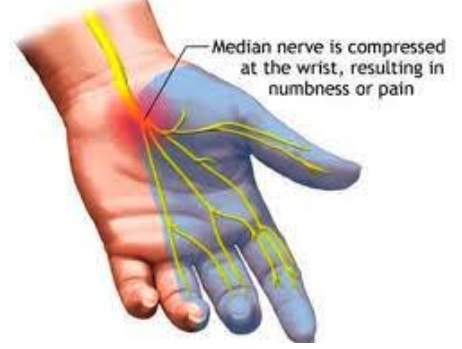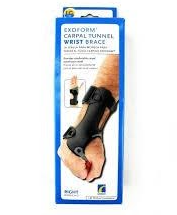
What Is Carpal Tunnel Syndrome And How Can You Treat It?
By Physiotherapist Jewel Oh
The carpal tunnel is an area in our wrist on the palm side where our tendons that help our fingers to grasp and flex run. Our wrist bones make up the floor of the tunnel and there is a strong fibrous ligament than acts as the roof of the tunnel. In the tunnel with the tendons there is also a nerve, an artery and a vein. The nerve is called the Median Nerve and it allows us to move our thumb and feel on our thumb, index finger, middle finger and half of the ring finger. Carpal tunnel syndrome occurs when there is pressure on this nerve from a variety of causes.
What are the symptoms of carpal tunnel syndrome?
- Numbness or pins and needles in our hand, around the thumb, index and middle fingers are the most commonly reported symptoms of carpal tunnel syndrome.

- Pain in the wrist is also common and the symptoms are often worse at night. People wake feeling like their hand is asleep and they need to shake or move it to wake it up.
- People often notice weakness in the hand and have trouble grasping or find they are constantly dropping things.
What causes carpal tunnel syndrome?
Carpal tunnel syndrome is caused by pressure on the median nerve within the carpal tunnel.
The most common causes are:
- Repetitive wrist movements especially fully bending or extending or awkward grasping
- Poor ergonomics – using a computer or other work task that is inefficient
- Using tools or work with lots of vibration
- Swelling and Inflammation
- Arthritis – Rheumatoid or Osteo
- Trauma – including fractures and sprains
- Pregnancy
How do I know if I have carpal tunnel?
- If you have the signs and symptoms of carpal tunnel syndrome, you can have the diagnosis confirmed by a health professional.
- A diagnosis of carpal tunnel syndrome can be made by our physiotherapists. They will complete a clinical assessment and a couple of simple tests in the clinic. Occasionally, a nerve conduction study is required.
How can physiotherapy help with carpal tunnel?

- Splinting
Splints can be prescribed by our physiotherapists to support your wrist in a neutral position to take pressure off the nerve. This is especially important at night when it is more difficult to control your wrist position.

-
Ergonomic advice
Symptoms can be reduced by avoiding certain common wrist positions and activities that increase the pressure in the tunnel.
Having your computer set up assessed and improved will help. -
Wrist and Finger exercises
Getting your tendons moving within the tunnel can help to take some of the pressure off the nerves and reduce swelling. -
Swelling management
Your Physiotherapist can show you some techniques to help control swelling including the use of hot and cold and some massage techniques. A compression glove may also help. -
Nerve gliding exercises
We don’t think of nerves actually needing to move but they can become tight or restricted just like muscles do. If there is restriction in your median nerves ability to move your physiotherapist may show you some exercises to glide your nerves all the way from your neck, where they start, down as far as your fingers where they end. -
Strengthening
If your muscles have wasted away due to the nerve being compressed your physiotherapist can show you some strengthening exercises for your thumb and fingers. This will help you to stop dropping things! -
Surgery
Surgery is required for a small percentage of people with carpal tunnel syndrome. If despite trying a good conservative approach to managing your Carpal Tunnel Syndrome your symptoms persist or the numbness is constant and weakness is severe then a specialist opinion will be recommended. Often nerve conduction studies will be requested first to determine the level of nerve compression and if severe a surgeon will cut the strong fibrous ligament over the top or roof of the tunnel to take the pressure off the nerve and structures in the tunnel. Physiotherapy can help you in your recovery and rehabilitation from the surgery if it is required.
What can I do at home?
- Listen to your body and find the activities that aggravate and try to minimise or avoid these activities. If you find activities that give you relief then do these.
- Wear a splint to support your wrist for up to 3-6 weeks. You may find wearing it at night or when it is most irritated is enough.
- If your hand is swollen follow the advice from your physio and keep your hand elevated and keep the fingers moving.
Book An Appointment
Come and have a chat with one of our physiotherapists to see if we can help improve your health. Book online or call the clinic on (03) 5232 2400.
